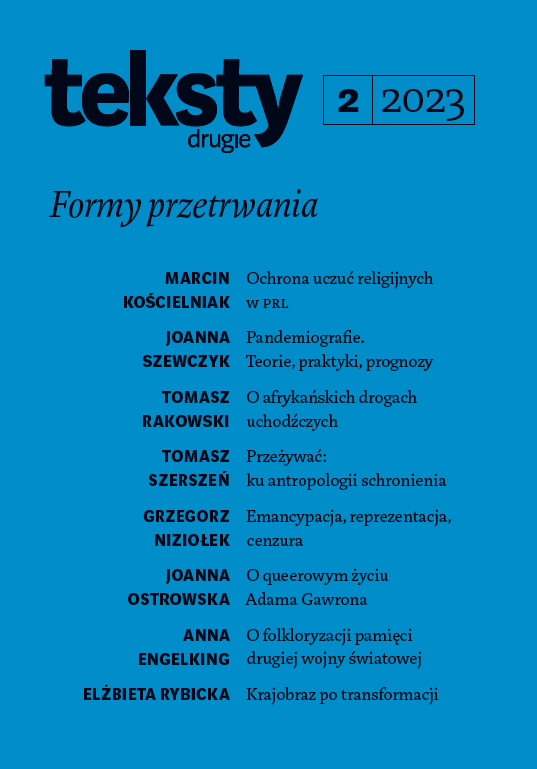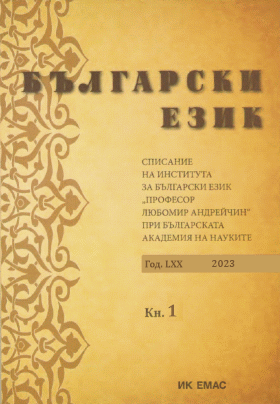Wokół haptyczności obiektów,
wierszy i prozy Krystiany Robb-Narbutt
Author(s): Marta Tomczok / Language(s): Polish
Issue: 2/2023
The article analyzes the idea of concealing and hiding painful, personal experiences –including those related to the loss of loved ones in the Holocaust – in the art and poetry ofKrystiana Robb-Narbutt (1945–2006). The idea resembles the development of an embryoand later the fetus sheltered by the womb; a being unable to live independently outsidethe womb finds refuge in it, which gradually becomes more visible until it reaches a statewhen it is no longer needed and is left behind by the child.In Robb-Narbutt’s art, the prenatal stage – the concealing of experience – reaches astate of autonomy, in fact becoming the main and only stage of presenting what is mostimportant in her work: objects withdrawn from direct contact with the recipient anddirectly connected to some pain, someone’s trauma. This stage is important preciselybecause it presents the painful – partly presumed – experience untouched by the vieweror reader and mediated through a hiding place, a box, or a stash, but also a poem, namelymaterial and visual shelters that do not symbolize a concealment but indeed create it.However, this shelter is not temporary – as in the case of pregnancy – but permanent,and what is protected is not a simple translation of growing and dependent existence intoart, nor a visualization or symbolization of a growing fetus. On the contrary, the sheltersymbolically materializes the dead, the absent, and the lost, namely various dimensionsof death. Present in all stages and states of Robb-Narbutt’s work, such shelter makesher art a maternal womb for the memories threatened with non-existence, most oftenknown only to the artist and related to the history of her family and her own, personalexperiences.
More...




